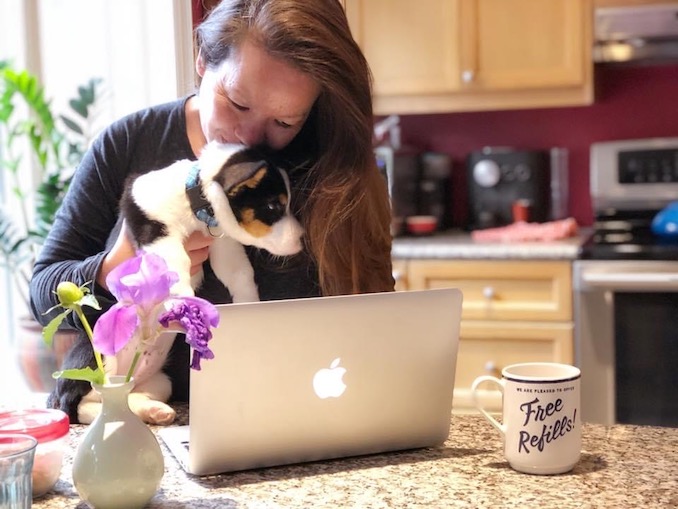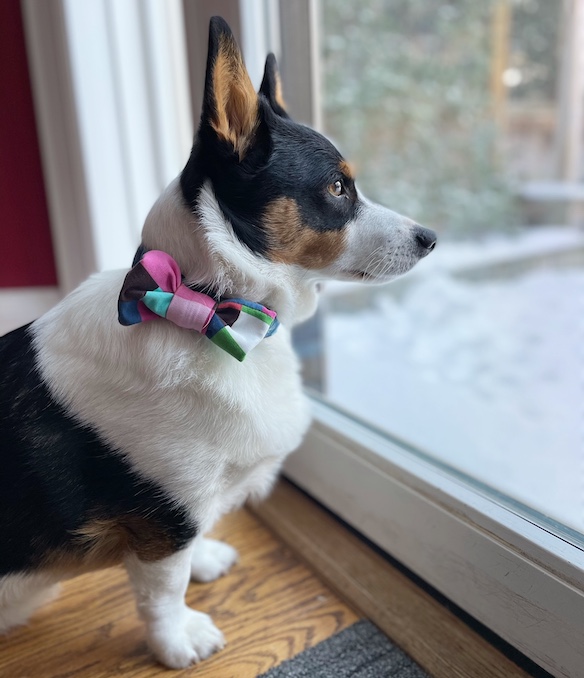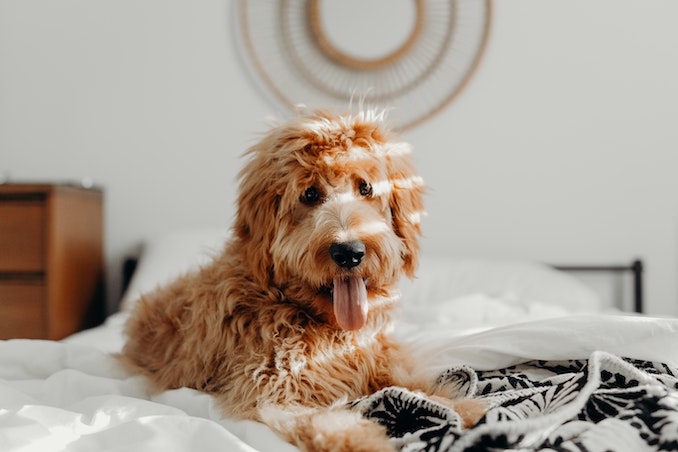We’ve all adjusted our work, study, and home life over the pandemic — our pets have as well. Many of us looked to our pets for comfort during these challenging times and, in return, they were happy with extra belly scratches and snuggles. According to a recent survey conducted by Royal Canin, a global leader in nutrition products for dogs and cats, 70% of those surveyed have stated their pets help to relieve stress and worry during the pandemic. No surprise that our beloved best furry friends have helped us manage our own mental health. But now that we’re looking forward to a fresh new year, we’re also thinking about the gradual return to the office in the coming months. Whether you’ve had a long time fur ball companion or a new one, you’ve probably been thinking about how you will transition yourself…and your pet back to work or school, when the time comes.

As a dog pawrent myself, I’ve already been thinking about this and what it will look like. Heck, if I could bring my dog along with me for work, that would be sweet. It was no surprise the survey revealed that nearly a third of Canadian pet owners were more willing to return to the office if there was a way their pets could join them. “Can I bring my dog?” is already swirling in my mind — boss, you hear me?
“It is reasonable for pet owners to have concerns with any type of return to work schedule nowadays especially since separation anxiety in dogs has been given so much attention during the pandemic,” said Dr. Colleen Wilson, Canadian Veterinarian and Specialist in Animal Behaviour and Diplomate of the American College of Veterinary Behaviorists. “The good news is that we are seeing a more fluid hybrid transition instead of an abrupt, back to work type scenario.This is a positive for our pets because it allows space to adapt and adjust, and can contribute to less anxiety for both pets and owners. More confident and less anxious pet owners have been studied and found to have less behaviour problems with their dogs, including separation anxiety.”
Some common signs of separation anxiety in pets include;
- Destructive behaviours
- Excessive vocalization
- House soiling when otherwise trained
- Excess salivation
- Exaggerated Greeting Behaviour when owners return home

Dr. Colleen Wilson shares her tips and tricks for establishing a successful transition back to work, especially for dog owners.
Before returning to work, it’s important to assess the existing level of separation anxiety, so you can set up routines and strategies in place to help ease the transition to office, whether you are going back to a hybrid or full-time model.
At a minimum, owners who teach pets a positive association with their departures, like leaving several food puzzle toys or a high value treat to work on when they leave associates departures with a feel good emotion.
If an owner determines their pet is anxious when alone, they can set up a routine and use the following strategies to help reduce anxiety with departures. This contributes to a positive transition back to the office, whether back to a hybrid or full-time model.
Tip 1: To confirm if your pet is suffering from separation anxiety, audio or video record the pet when alone in the home. This set up can be placed anywhere the owner will be able to hear and/or see their pet.
Tip 2: If you’ve noticed typical anxiety related behaviours such as excessive salivation, vocalization, destructive behaviours and/or elimination only when alone, it’s time to help your pet feel better by starting “independence training.” Begin by establishing what treat or food puzzle toy leads the pet to focus its attention on it for about 15-20 minutes.
Tip 3: Once established, the owner can start moving around the room, monitoring the pet for continued focus on the treat/food. Gradually, progressing slowly, the owner can leave the room for a few seconds to minutes, all the while the animal is feeling good, focused on their food toy/treat.
Tip 4: During this initial conditioning to “feel good in the owner’s absence”, an owner always returns to the pet while they are focused on the food/treat. Because the animal is experiencing a positive emotional state in the owner’s absence, this can communicate: “Don’t worry, I am coming back” and makes comings and goings un-eventful. This contributes to a healthy transition for a return-to-work schedule, either full time or part of the time because the routine for departure is always sending this same message.
Tip 5: Attempts to teach independence at a faster pace (e.g., walking to the nearby mailbox or running a quick errand), without ensuring the pet is relaxed and feeling good in the owner’s absence, can lead to “sensitization”. This means the animal is easily triggered to feel anxious whenever the owner leaves. If attempts at independence training are not successful, then it is time to consult with your veterinarian or veterinary behaviourist to discuss other treatment options.

What about transitioning back to doggy daycare? Dr. Wilson explains transitioning back to a daycare situation involves many of the same rules that apply when first choosing a day care. “Ensure that the staff are kind and use positive interactions when dealing with your pet, never punishment or punitive tools like shock/bark collars and choke chains. The latter have been proven to cause fear and anxiety for the animal and, the pet associates their use with that person. If your pet willingly enters the building, and you find out from staff they are eating regularly, interacting with staff and/or appropriate chosen dog friends, these are all signs the dog is coping well. If your dog isn’t participating in these activities, is scared to go in the day care, won’t eat and hides or doesn’t interact with staff members, inquire about anxiety and treatment with your veterinarian. Doggy day cares typically have a schedule, activities and people to watch and monitor your pet routinely- this gives them time to notice any concerns and let you know.”
*Survey methodology: H+K Strategies used the Leger Opinion (LEO) online panel to survey 1,000 Canadian pet owners over the period of October 14 to 21, 2021. Sample outgo was done with age, gender, and region quotas. Length of survey was less than 5 minutes. An associated margin of error for a randomly selected sample of n=1,000 would be +-3.1%, 19 times out of 20.




